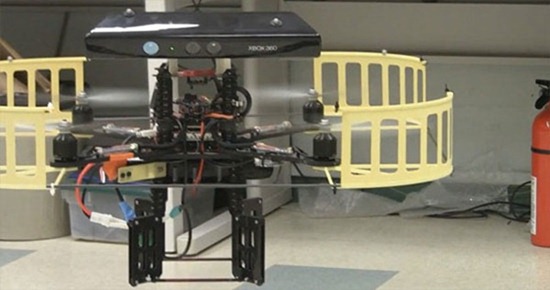Motion control gaming has been one of the biggest improvements in video game technology, but the gaming culture has expanded and grown outward to the point that people will apply video games and gaming technology to real life in different ways. Most common is when people take video game images and turn them into art. More creative ideas range anywhere from modding a console case to literally taking a component of a console and adding it to something else.
That’s what some students at the Hybrid Systems Lab at UC Berkeley came up with when they took apart an X Box Kinect camera and hooked it up to a model helicopter. The Kinect is set up as a standalone “eye” for the helicopter, giving it the ability to see where it’s going. The system is hooked up to a Linux box onboard which takes in visual data and relays directions for where it should go to avoid bumping into things. It’s a cool little plaything, and is probably one of the cooler Kinect mods out there.
This Kinect Helicopter is pretty neat because it is a fully autonomous machine. The Kinect’s linkup to the Linux box allows it to detect obstacles and its altitude, while a secondary motion detector is set up to provide other data which helps it control flight variables. The material for the little flier look pretty makeshift, but the overall design is pretty interesting, and seems to work really well.
The copter actually has fast spinning rotors which allow it to hover off the ground and fly, and as the video below demonstrates, the kinect camera actually makes the helicopter responsive to the environment; for example, an obstacle being put in front of it would make it pause without going any further. After said obstacle is removed, the copter continues to fly.
While it doesn’t fly too high off the ground, it’s a pretty interesting design, and definitely worth trying to model after.
If you’re into stuff like this, you can check out other model helicopters like this Flying Fish RC Minicopter or this Laser Powered Quadrocopter.
Via: DVice











